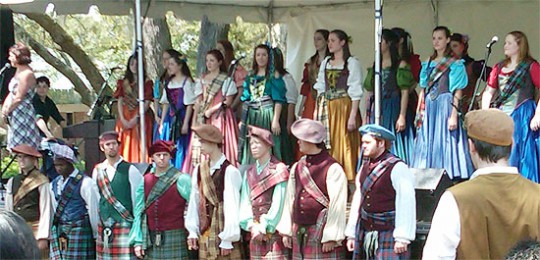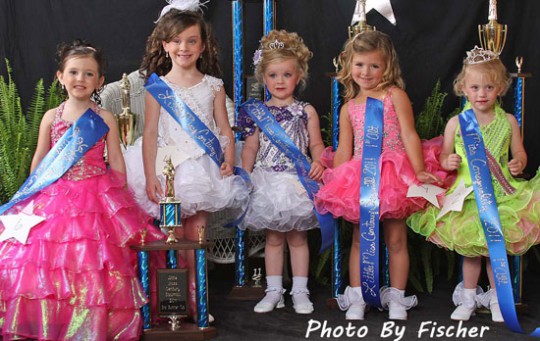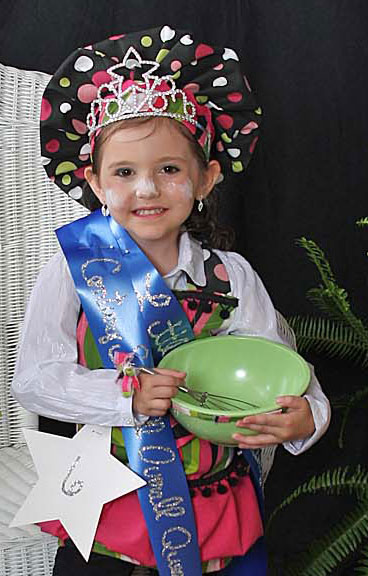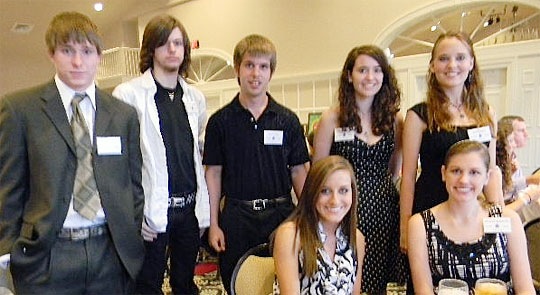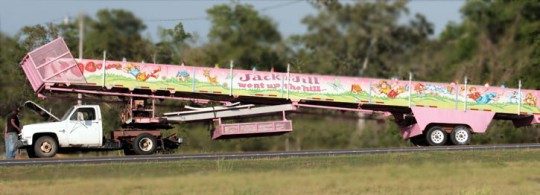Weekend Gardening: Remember Your Houseplants When Spring Cleaning
April 2, 2011
 Warmer weather signals that spring is here. After months of being cooped up indoors, it’s finally time for gardeners to go dig in the dirt. It’s also time for cooped up house plants to be revitalized.
Warmer weather signals that spring is here. After months of being cooped up indoors, it’s finally time for gardeners to go dig in the dirt. It’s also time for cooped up house plants to be revitalized.
Locate a shady area for this work. Even if houseplants are to be left out for a short period, after being shut up all winter, leaf damage can occur with only brief exposure to direct sunlight.
First, give the houseplants a bath. Use a soapy solution made of two teaspoons of mild liquid soap mixed with one gallon of water. Wash the leaves and stems, being certain to clean both upper and lower leaf surfaces. Allow the solution to remain on the plants for a few minutes, but rinse it off thoroughly before it is allowed to dry. This not only cleans plants, making them more attractive, but the soap helps to remove aphids, mealybugs and other insects.
Next, see if your plant needs re-potting. Although some plants require being pot-bound in order to flower eventually all plants outgrow their containers and become root- or pot-bound.
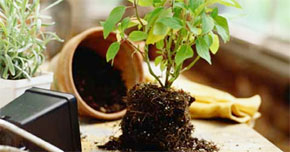 Why repot in the spring? Plant roots grow most actively in the spring, which means the plant will be able to quickly overcome the shock associated with re-potting.
Why repot in the spring? Plant roots grow most actively in the spring, which means the plant will be able to quickly overcome the shock associated with re-potting.
When repotting, start with a clean, appropriately sized pot. If you want the plant to grow larger, then you will need to repot it in a larger pot. If you want it to maintain its present size, you’ll have to prune its roots.
In general, the pot size should be increased by only about two inches per re-potting. Therefore, a plant whose root ball is in a six inch pot is normally transplanted to a pot with an eight inch diameter. For some reason, drastic changes in pot size when re-potting seems to be detrimental to some plants.
Watering the plant several hours prior will help you remove the plant more easily. Invert the pot and gently remove the plant by grasping the main stem. Give it a slight tug, and it should slip out of the pot. If it doesn’t, use a butter knife or other flat-bladed tool to loosen the sides of the pot and try again.
Once the plant is free of the pot, take the time to inspect the root system. Look for large, old circular roots which can strangle the plant and prevent much-needed nourishment. Sever or remove these old roots to allow new feeder roots to establish.
To re-pot, first add enough new soil mixture to the bottom of the pot to return the plant to its original depth. After the plant is replaced, fill in the sides with new potting soil.
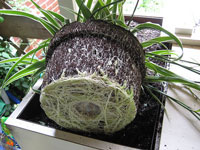 Use a quality potting mix when re-potting. Gardeners generally rely on commercially available potting soil mixes for growing most types of houseplants. A lot of brands are out there and not all of them are especially good. In particular, avoid heavy, black potting soils. If the bag feels dense and heavy for its size, put it back.
Use a quality potting mix when re-potting. Gardeners generally rely on commercially available potting soil mixes for growing most types of houseplants. A lot of brands are out there and not all of them are especially good. In particular, avoid heavy, black potting soils. If the bag feels dense and heavy for its size, put it back.
The best potting mixes include vermiculite, bark and perlite in proportions that create a fairly light, loose mix that water penetrates readily but drains rapidly.
If you don’t want to change pots, there is a way of dealing with a pot-bound plant and keeping it in the same size pot. First, remove the plant from the pot and trim off one-quarter to one-third of the lower part of the root ball. Put a layer of fresh potting mix in the bottom of the original container equal to the amount of the root ball removed. Place the plant back in the pot, adding a little more soil around the sides. Water well, and place the plant in a shady location to recover.
House plants would also benefit from fertilization at this time of year. There are many commercial materials available for fertilizing indoor plants. Most are effective and safe if used as directed.
Theresa Friday is the Residential Horticulture Extension Agent for Santa Rosa County.
Two-Day Festival On The Green Attracts Thousands
April 2, 2011
The 11th Annual Festival on the Green wrapped up Saturday on the campus of the University of West Florida.
Thousands of people took part in Friday and Saturday events including a fine arts show, handmade crafts, music, live performances, a book sale, food and a children’s craft festival. This year’s festival also included a Run with the Dogs 5K, a one mile fun run and the grand opening of UWF’s Olympic-size swimming pool.
The two-day Festival on the Green was a free event.
Pictured above and below: Scenes from Saturday’s Festival on the Green on the campus of the University of West Florida. NorthEscambia.com photos, click to enlarge.
Photos: 20th Annual Century Sawmill Pageant Winners
March 30, 2011
Over 65 contestants took part in this year’s 20th Annual Century Sawmill Pageant sponsored by the Century Lions Club.
The winners and their photos are below:
Baby Miss: Peyton S. Lee, queen; Ashley Elizabeth Mixon, first, photo, sportswear; Kaydence Makenzie Hadley, second; Addison Wise, third.
Toddler Miss: Emilee Grace Braswell, queen, sportswear; London Vera Brooks, first; Carlisa Spears, second, photo; Malia Jenay Smith, third; Alyssa Hullett, sold most tickets.
Little Miss: Jada Jones, queen; Olivia Blaze Griffis, first; Jordan Elizabeth Sanders, second; Andrea Grace Lasala, third, photo, all over queen; Kaylyn Franklin, sold most tickets.
Young Miss: Briana Dunsford, queen; Emma Barrow, first, sportswear; Maegan Mallett, second; Caroline Elizabeth Harp, third; Mallory Samantha Floyd, photo.
Junior Miss: Ansley Brooke Lasala , queen, sportswear, photo; Carly Leanne Sanders, first; Alexis Ariel Clark, second; Hannah Merchant, third.
Pre-teen: Mackenzie Taylor Leeser, queen; Morgan Shelby Floyd, first; Valencia Ariana Burnette, second; Auburn N’Cole Jernigan, third, sportswear; Tori Marie Knapp, photo.
Miss: Savannah Elizabeth Hart, queen, sportswear; Alayna Nicole Gordon, first, photo; Kourtney Paige Smith, second; Brooklyn Shae Dortch, third.
Overall Queen: Andrea Grace Lasala.
“The Century Lions would like to thank all of the sponsors who bought ads in this year’s program, all of the volunteers who worked at the pageant and assisted with everything, especially the teachers at Byrneville Elementary. Many members of the community worked tirelessly with posters, flyers and signing up contestants. This year’s pageant was the biggest and best ever. All proceeds will benefit children in our area who may need assistance with glasses,” the Century Lions Club said.
All photographs courtesy Photo By Fischer, Century for NorthEscambia.com. Reprints are available (850) 256-3980.
March Students Of The Month Named
March 29, 2011
Escambia County Students of the Month for March have been named by the Escambia Association for Administrators in Education. The awards are presented monthly to two students from participating schools.
The following students were named from participating North Escambia area schools:
- Bratt Elementary: Madelin M. Sheedy, second grade; Brandy L. Wooten, fifth grade
- Molino Park Elementary: Reagan G. Daniels, first grade; Madelyn G. McAnally, first grade
- Jim Allen Elementary: Miranda L. Sanders, fifth grade; Lillian O. Sellers, fifth grade
- McArthur Elementary: Zane N. Sampey, second grade; Dys’iraye D. Booth-Martin, second grade
- Ransom Middle: Michael J. Brennan, sixth grade; Carmen E. McCrackin, sixth grade
- Northview High: Amber D. Francis, 11th grade; Jonathan A. Moretz, 10th grade
- Tate High: Ashley L. Bailey, 11th grade; Dillon C. Godwin, 11th grade
Pictured top: Northview High School Students of the Month for March Jonathan Moretz and Amber Francis. Submitted photo for NorthEscambia.com, click to enlarge.
Creative High School Students Honored With MIRA Awards
March 28, 2011
Ten of the most creative students from each high school in the county were honored recently as recipients of the 2011 MIRA Creative Arts Awards.
North Escambia area students honored during the dinner ceremony at the Mustin Beach Officers’ Club on Pensacola Naval Air Station were:
Northview High: Jared Adams, wood carving; Corry Baggett, woodworking; Mallory Bell, music; Caitlyn Brown, graphic arts; Dixie Carnley, digital graphic arts; Katelyn Garrison, digital graphic arts; Aaron Hammond, visual arts; Sarah Killam, music; Christina Sepulveda, graphic arts; Colton Sims, instrumental music.
Tate High: Maureen Crisco, pottery; Emily Danforth, chorus; Caitlyn Gallagher, instrumental music; Justin Gaylard, drama/choral music; Chloe Jackson, debate; Christopher L. James, instrumental music; Kim McCroan, drama/dance; Alexandria Quinn, visual art; Kayte Turner, dance; Caitlynn Walsh, jewelry design.
West Florida High: Cameron “Teddy” Bell, drama; Chelsea Driver, directing; Dominic Johnson, photography; Greg Lee, visual art; Nadia Mehriary, nonfiction writing; Forrestt Midkiff, television production; Brendan Trey Searcy, visual art; Diana Veitch, visual art; Ashley Vosmera-Mitchell, drama/costumes; Jashauna Williams, music.
Pine Forest High: Jennifer Barrett, journalism; Katherine Cooper, drama; Danielle Cotto, drama; Joshua Merced, instrumental music; Kimberly Raines, journalism; Chelsea Taylor, chorus; Zachary Woods, instrumental music; Joseph Wright, chorus; Christina Zarr, drama.
Pictured top: Northview High MIRA Award winners Corry Baggett, Aaron Hammond, Jared Adams, Katelyn Garrison, Dixie Carnley, Caitlyn Brown, and Christina Sepulveda. Not pictured: olton Sims, Mallory Bell and Sarah Killam. Submitted photo by Vicki Baggett for NorthEscambia.com, click to enlarge.
Photo (And Poem): Jack And Jill’s Hill Breaks Down In Walnut Hill
March 28, 2011
 There was a minor traffic hazard created on Highway 97 in Walnut Hill Sunday afternoon when a truck hauling the hill portion of “Jack and Jill” carnival ride broke down, about a mile south of the two water towers at Ernest Ward Middle.
There was a minor traffic hazard created on Highway 97 in Walnut Hill Sunday afternoon when a truck hauling the hill portion of “Jack and Jill” carnival ride broke down, about a mile south of the two water towers at Ernest Ward Middle.
After taking a photo, we were unable to resist having fun with a local rendition of the Jack and Jill nursery rhyme. (Our apologies in advance.)
Jack And Jill’s Hill In Walnut Hill
Jack and Jill went up to Walnut Hill
Not from the tower of water.
The truck broke down with a funny sound
And people to help came after.
The engine did come back to life again
With the work of a couple of men.
But not before a North Escambia photo
So that the world would know
That Jack and Jill’s very famous hill
had been in our very own Walnut Hill.
Pictured top: A minor traffic hazard was created Sunday afternoon in Walnut Hill when truck pulling a “Jack and Jill carnival ride broke down on Highway 97. NorthEscambia.com photos, click to enlarge.
Bratt, Molino Park Pre-K Registration Underway
March 28, 2011
Registration is underway for the Voluntary Pre-Kindergarten program for four-year olds at Bratt and Molino Park elementary schools.
Bratt Elementary
Registration packets can be picked up March 28 – April 8 and again May 2 – May 20. Parents or guardians will need their photo identification, the child’s immunization record and a physical for the child within one year prior to April 22, 2011. Students should be four-years old before September 1, 2011. For more information, contact Bratt Elementary School at (850) 327-6137.
Molino Park Elementary
Registration will be March 28-April 8. Parents must bring proof of residency, a utility bill, a photo identification of the parent or guardian, proof of guardianship if not the parent, child’s immunization record and a physical dated within one year prior to August 22, 2011. The child’s birth date must be between September 2, 2006, and September 1, 2007. For more information, contact Molino Park Elementary at (850) 587-5265.
Dombroskie Graduates From Military Basic Training
March 27, 2011
 Air Force Airman 1st Class Laura A. Dombroskie graduated from basic military training at Lackland Air Force Base, San Antonio, Texas.
Air Force Airman 1st Class Laura A. Dombroskie graduated from basic military training at Lackland Air Force Base, San Antonio, Texas.
The airman completed an intensive, eight-week program that included training in military discipline and studies, Air Force core values, physical fitness, and basic warfare principles and skills. Airmen who complete basic training earn four credits toward an associate in applied science degree through the Community College of the Air Force.
She is the daughter of John Dombeoskie of Milestone Blvd., Cantonment, Fla. Dombroskie is a 2007 graduate of Tate High School.
Featured Recipe: Sopapilla Cheesecake
March 27, 2011
This weekend’s featured recipe is Sopapilla Cheesecake, an impressive combo of sugary crunch topping and a smooth and creamy center. It’s a terrific recipe for anyone looking to make a splash at dinner without spending all day in the kitchen. Garnish with berries or citrus zest for a lovely presentation and a memorable end to your meal.
To print today’s recipe column, you can click the image below to load a printable pdf with a recipe card.
Behind The Pollen: Those Majestic Oaks
March 26, 2011
Trees are slowly waking up after a long winter’s nap. While some trees awaken with a beautiful floral display, others are more subtle. One such restrained tree that is just waking up is the oak.
 Oak trees produce flowers each spring, although their flowers are not the showy type. Showy flowers are showy for a reason; they need to attract insect pollinators to transfer their pollen. It’s the plants that don’t have showy flowers – cedars, oaks, pines, hickories, grass, and the notorious ragweed that make the lives of allergy sufferers miserable each year. These plants have chosen wind as their means of spreading pollen, and an effective method it is. Windblown pollen is produced in abundant quantities and can be carried for miles in the breeze.
Oak trees produce flowers each spring, although their flowers are not the showy type. Showy flowers are showy for a reason; they need to attract insect pollinators to transfer their pollen. It’s the plants that don’t have showy flowers – cedars, oaks, pines, hickories, grass, and the notorious ragweed that make the lives of allergy sufferers miserable each year. These plants have chosen wind as their means of spreading pollen, and an effective method it is. Windblown pollen is produced in abundant quantities and can be carried for miles in the breeze.
All members of the Quercus genus are known to produce large amounts of pollen, making both deciduous and evergreen oaks highly, to extremely, allergenic. One way of knowing when the oak trees are blooming is the appearance of yellow pollen on your car, sidewalk or pool. Following the bloom, oak flowers, known as catkins, drop to the ground and accumulate along curbs.
Successful pollination results in the development of acorns. Curiously, the word for oak tree fruit is not the same word for the tree. Apples grow on apple trees, hickory nuts and pine nuts grow on hickories and pines, but acorns grow on oaks. This odd disconnection between the parent and fruit names goes back to an Old English word meaning fruit of a tree.
Oaks can be divided into two broad categories: the red (or sometimes called black) oaks and the white oaks. The main difference between the groups is the time it takes for the seed, or acorn, to mature.
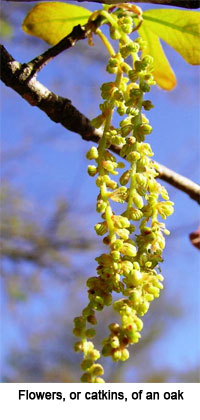 Examples of red oaks include the laurel oak, Southern red oak, turkey oak and water oaks. Their leaf lobes are usually pointed or tipped with a fine bristle. A bristle is a small spine at the tip of the leaf. Red oaks produce flowers each spring. The acorns of these trees, however, take two seasons to mature following their formation, leading to the designation as biennial oaks.
Examples of red oaks include the laurel oak, Southern red oak, turkey oak and water oaks. Their leaf lobes are usually pointed or tipped with a fine bristle. A bristle is a small spine at the tip of the leaf. Red oaks produce flowers each spring. The acorns of these trees, however, take two seasons to mature following their formation, leading to the designation as biennial oaks.
Some examples of oaks in the white group include the live oak, post oak and the swamp chestnut oak. White oaks generally have a rounded leaf tip and rounded lobes without bristles. Their acorns are sweeter than those of the bitter red oak group, making them more palatable to both humans and wildlife. After pollination the white oak acorns grow and mature in only one season. Oaks that have acorns that mature in the fall of the year they are formed are designated as annual oaks.
If we have a warm spring and a summer with enough rain we typically will have a heavy crop of acorns in autumn. That’s why a heavy crop of acorns is not an indicator of the severity of winter to come but rather a reflection of the past spring and summer.
Oaks provide valuable food for vertebrate wildlife in the form of acorns. More than 100 species of vertebrate animals are known to consume acorns in the U.S., including mammals such as white-tailed deer, gray squirrels, fox squirrels, flying squirrels, mice, voles, rabbits, raccoons, opossums, gray foxes, red foxes, and wild hogs. Birds that feed on acorns include wild turkey, bobwhite quail, wood ducks, mallards, woodpeckers, crows, and jays.
Theresa Friday is the Residential Horticulture Extension Agent for Santa Rosa County. Photo courtesy Theresa Friday.



